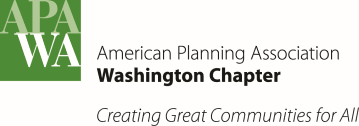- About Us
- Events & Training
- Professional Development
- Sponsorship
- Get Involved
- Resources
Legacy and ProphecyBy Bill Grimes, AICP A “new normal” – to use once again an overused phrase – will result from the struggle between the forces pushing for a return to the way we’ve done things and those pushing for fundamental change. The experiences we’ve had during the “great recession” have caused us to make difficult decisions, sacrificing things we’ve held dear, leaving things undone, and questioning our own expectations of what we can achieve as planners. It exposed our folly and our vulnerability. We’ve all been touched by it. What are we going to do about it? In this context, our legacy need not be our prophecy, and we face the challenge of defining new approaches, new methods, and new outcomes that more closely meet today’s demands; demands different than those we faced less than a decade ago. It’s an opportunity we must embrace, questioning those assumptions that guided us in the past. This is no easy task. It puts at risk what we find comfortable in favor of what must replace it. State tax policy and statutory restrictions on property tax revenue increases – much of which was developed during times of relative prosperity – limit the amount of resources available to public agencies. Even the most progressive city councils have had to adopt conservative fiscal philosophies in response. Local resources have become scarce, and the ability to generate revenue to replace what was lost has proven virtually impossible. We’ve had to question how we spend our money, and, even more fundamentally, how we structure our cities to resist crisis in times of economic instability. The Growth Management Act, a planning staple for 20 years, presumed our communities would grow and where development would fit within the confines of regulatory constraint. There was a balance, a promise that public investment would support urban densification. But fiscal crisis stemmed local spending, and the ability of development to fulfill the GMA’s vision of urban communities was challenged at its core. The assumption of a robust development economy, an underpinning of GMA, is in doubt. We need to respond, proposing plans that fulfill GMA’s requirements while also achieving community resiliency. While we explore ways that must break from tradition, we are encumbered by a context that may restrict our flexibility in doing it. But we’re experts at finding creative solutions, and this conference challenges us to examine our assumptions, experiment with new approaches, and actively participate in defining our way forward.
|

